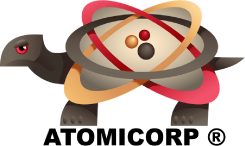|
|
|
0 members (),
991
guests, and
30
robots. |
|
Key:
Admin,
Global Mod,
Mod
|
|
S |
M |
T |
W |
T |
F |
S |
|
|
1
|
2
|
3
|
4
|
5
|
6
|
|
7
|
8
|
9
|
10
|
11
|
12
|
13
|
|
14
|
15
|
16
|
17
|
18
|
19
|
20
|
|
21
|
22
|
23
|
24
|
25
|
26
|
27
|
|
28
|
29
|
30
|
31
|
|
|
|
|
There are no members with birthdays on this day. |

#135
Sat 18 May 2002 03:04:PM
|
Joined: Feb 2001
Posts: 3,536
Mission Commander
|
OP

Mission Commander
Joined: Feb 2001
Posts: 3,536 |
MEDIA RELATIONS OFFICE<br />JET PROPULSION LABORATORY<br />CALIFORNIA INSTITUTE OF TECHNOLOGY<br />NATIONAL AERONAUTICS AND SPACE ADMINISTRATION<br />PASADENA, CALIF. 91109. TELEPHONE (818) 354-5011<br /> http://www.jpl.nasa.gov<br /> <br />Contact: JPL/Guy Webster (818) 354-6278<br /> University of Hawaii/Karen Rehbock (808) 956-6829<br /><br />FOR IMMEDIATE RELEASE May 17, 2002 <br /><br />ASTRONOMERS DISCOVER 11 MORE SMALL MOONS OF JUPITER<br /><br /> The discovery of 11 small moons orbiting Jupiter <br />leapfrogs the number of that planet's moons to 39, nine more <br />than the record of the previous champ, Saturn.<br /><br /> A team led by astronomers from the University of Hawaii, <br />Honolulu, made the discovery based on images taken in <br />December 2001 and later follow-up observations. Orbits were <br />determined by collaborators at NASA's Jet Propulsion <br />Laboratory, in Pasadena, Calif., and the <br />Harvard-Smithsonian Center for Astrophysics, Cambridge, <br />Mass.<br /><br /> Researchers estimate the new-found natural satellites <br />are each about two to four kilometers (one to two miles) <br />in diameter, and were probably passing rocks captured by <br />Jupiter's gravity long ago.<br /><br /> The discovery-team leaders, Scott Sheppard and <br />Dr. David Jewitt of the University of Hawaii, also <br />discovered 11 other small satellites of Jupiter in 2000.<br /><br /> The new moons were discovered by Sheppard, Jewitt and <br />Jan Kleyna of Cambridge University, England. They used the <br />Canada-France-Hawaii 3.6-meter (142-inch) telescope with <br />one of the largest digital imaging cameras in the world to <br />obtain sensitive images of a wide area around Jupiter.<br /><br /> The digital images were processed and searched using <br />computers. Candidate satellites were monitored in the <br />succeeding months at the University of Hawaii's 2.2-meter <br />(88-inch) telescope to confirm their orbits and to reject <br />asteroids masquerading as satellites.<br /><br /> JPL's Dr. Robert Jacobson and Harvard-Smithsonian's <br />Dr. Brian Marsden determined the satellites' irregular -- <br />highly elongated and tilted -- orbits. All 11 objects <br />orbit in the direction opposite to the rotation of the <br />planet.<br /><br /> The orbits of the irregular satellites strongly <br />suggest an origin by capture. Since no efficient <br />contemporary capture mechanisms are known, it is likely <br />that the irregular satellites were acquired when Jupiter <br />was young, possibly still in the process of condensing <br />down to its equilibrium size. As yet, nothing is known <br />about their surface properties, compositions or densities, <br />but they are presumed to be rocky objects like the <br />asteroids.<br /><br /> The new discoveries bring the known total of <br />Jovian satellites to 39, of which 31 are irregulars. The <br />eight regular satellites include four large moons discovered <br />by the astronomer Galileo Galilei and four smaller moons on <br />circular orbits closer to Jupiter. Jupiter's nearest rival <br />for having the largest number of known satellites is Saturn, <br />with 30, of which 13 are irregular.<br /><br /> The satellites were formally announced by the <br />International Astronomical Union on Circular No. 7900 <br />(May 16, 2002). More information about them is available <br />online from the University of Hawaii at <br /><br /> http://www.ifa.hawaii.edu/~sheppard/satellites/jup.html . <br /><br />Other information about the Jupiter system is available <br />from JPL at <br /><br /> http://www.jpl.nasa.gov/solar_system/planets/jupiter_index.html .<br /><br /> The Institute for Astronomy at the University of Hawaii <br />conducts research into galaxies, cosmology, stars, planets <br />and the Sun. The Canada-France-Hawaii telescope is funded by <br />the University of Hawaii and the governments of Canada and <br />France. JPL, a division of the California Institute of <br />Technology, Pasadena, is NASA's lead center for robotic <br />exploration of the solar system.<br /><br /># # # # #
|
|



CMS The Best Conveyancing solicitors conveyancing quotes throughout the UK
For any webhosting enquiries please email webmaster@aus-city.com
|
|
Entire Thread
|

 Astronomers Discover 11 More Small Moons Of Jupiter
Astronomers Discover 11 More Small Moons Of Jupiter
|
VA3DBJ
|
Sat 18 May 2002 03:04:PM
|
|
Forums60
Topics752,398
Posts787,084
Members2,958
| |
Most Online11,610
Dec 2nd, 2025
|
|
|
|
|
Copyright 1996 - 2024 by David Cottle. Designed by David Bate Jr. All Rights Reserved.
By using this forum, the user agrees not to transfer any data or technical information received under the agreement, to any other entity without the express approval of the AUS-CITY Forum Admins and/or authors of individual posts (Forum Admins and DoD/USSPACECOM for the analysis of satellite tracking data).
Two-line elements (TLE) and all other satellite data presented and distributed via this forum and e-mail lists of AUS-CITY are distributed with permission from DoD/USSTRATCOM.



Reprise Hosting








|

|